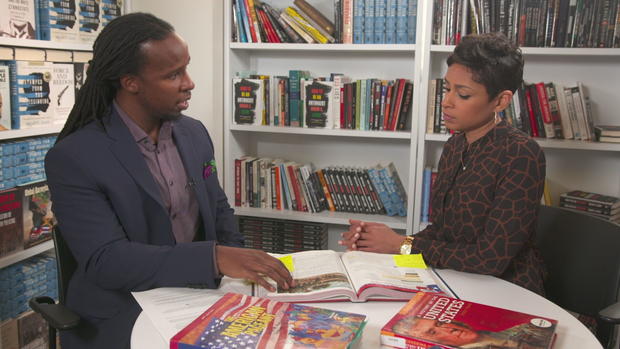A two-month-long CBS News investigation and analysis of how black history is being taught in U.S. public schools found what students learn often depends on where they live and the textbooks they are using. The analysis, published during Black History Month, also found major problems in the way students are being taught topics like slavery.
CBS News picked four textbooks used in public school classrooms across the country, and asked our contributor, Dr. Ibram X. Kendi, to look at them. Kendi is the author of the book, “How to Be an Antiracist,” and the founding director of the Antiracist Research and Policy Center at American University.
“Reviewing these texts closely, now I can see why so many students get to college and they’re like, ‘why didn’t we learn this in high school?’ because it isn’t in these texts,” said Kendi. “When we instruct our children, we should be instructing them in truth.”
One of the books, “The American Pageant,” is widely used in Advanced Placement history classes in high schools across the U.S. The publisher of the book, Cengage, told CBS News more than five million students learn from it each year. It is also on the College Board’s list of books that “meet the curricular requirements of AP U.S History.”
Early editions of the book date back to the 1950s. In 2018, the Southern Poverty Law Center, an advocacy group, gave a recent edition a 60 percent score for how it teaches American slavery.
CBS News reviewed the 16th edition of the book published in 2016. We found it is currently being used widely by teachers. Our analysis found several problems in the book. Beginning on page 346, the term, “mulatto” and “mulattoes” is used. For example, one sentence reads, “In the deeper South, many free blacks were mulattoes, usually the emancipated children of a white planter and his black mistress.”
“The term mulatto, in many ways, is a racial slur, is a racist slur against biracial people,” said Kendi. “The root of that word is mule, and so it was imagined in the decades leading up to the Civil War that biracial people were essentially like mules. In other words, it was imagined that black people and white people were separate species of being and so as a result, a biracial person, like a mule, would not be able to reproduce. And so that’s how and where the term mulatto came from. It was essentially a racist slur.”
The book also includes a map, referring to enslaved Africans in 1775 as “immigrants.” On the map, immigrant groups like the Dutch, Scottish and German are listed.
Source: CBS
